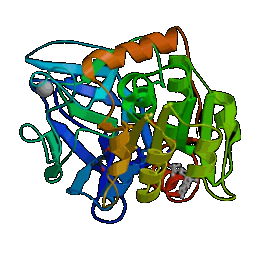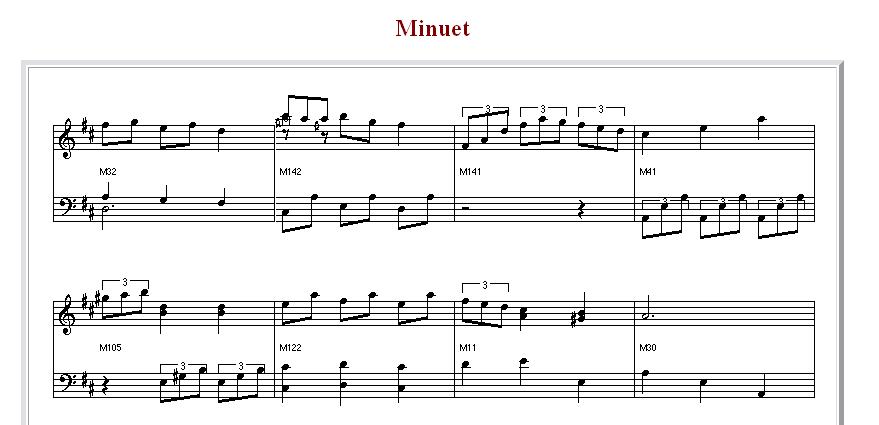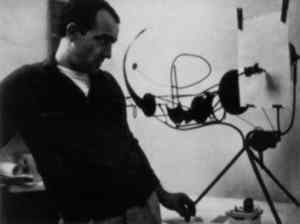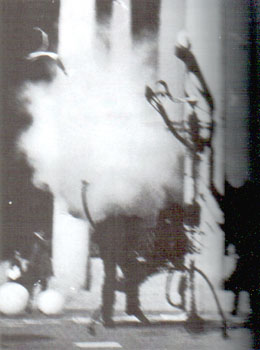
Generative Creativity - Lecture 3:
Dice Games
How it used to be done
With its flexibility and programmability, the multi-media computer is an
ideal tool for generative creativity.
But prior to the computational era, GC meant using some other sort of
configurable mechanism.
The spirograph

Spirograph applet
From http://www.wordsmith.org/anu/java/spirograph.html
See also http://www.dogbomb.com/spi
Harmonographs
http://www.worldtreesoftware.com/fun/hgraph/index.html
Canonic composition
Slightly further back in time...
15th century canonic composition involved algorithmic specification for
accompaniment parts.
The prevailing method was to write out a single
voice part and to give instructions to the
singers to derive the additional voices from it.
The instruction or rule by which these further
parts were derived was called a canon, which
means `rule' or `law.' For example, the second
voice might be instructed to sing the same
melody starting a certain number of beats or
measures after the original; the second voice
might be an inversion of the first or it might
be a retrograde [etc.] (Grout and Palisca, p. 166).
Mozart's Dice Game
- Mozart's Dice Music was a `musical game' involving the
putting together of musical fragments by chance (i.e., decided
on the roll of the dice).
http://sunsite.univie.ac.at/Mozart/dice/collaborate.cgi?tables=yes

Output

Pellegrino
GC in installation-form.
- Metabiosis was an 1972 installation produced by Ron Pellegrino.
- A light source was projected onto multiple lenses which moved
according to ambient air-flows.
- Varying responses of photo-sensitive cells on the walls sent as
control voltages to several analogy synthesizers, triggering changes in
frequency, timbre and amplitude.
John Cage, 4'33''
Cage's visit to an anechoic (sound-deadened) chamber in the
1940s inspired the thought that there is no such thing as pure
silence. (In the chamber he was able to `hear' the sound of
his own blood circulation.) He subsequently `composed' his
most famous/notorious piece: 4'33'.
At its first performance in 1952, the `performer' sat down at
the piano, and keeping track of the time on a stopwatch,
turned the pages of the score, occasionally closing/opening
the piano lid. Cage's idea was that anyone listening intently
would have heard sounds, although not the ones they were
expecting to hear.
Also relevant is Cage's `Reunion' installation. This made use of a
photo-receptor equipped chessboard. Every time a player makes a move, a
different sound is triggered.
Jackson Pollack
Jackson Pollack's drip paintings can be viewed as
a kind of GC.
He would lay large canvases on the floor and then wander around pouring,
splattering and dropping paint on to them.
In the case of `Enchanted Forest' (next slide) Pollack used household
black and red enamel.
Enchanted Forest

Tinguely's Méta-matic
Jean Tinguely produced `meta-matic' assemblages with wires,
wood sticks, cardboard, metal disks, pulleys, gears and ropes.
These developed rotations in space and sometimes broke
down.

Tinguely in his studio
Tinguely culled paintings from his machines (which he signed).

Meta-matic explosion

Summary
- Spirograph
- Harmonograph
- Canonic composition
- Mozart's Dice Game
- Pellegrino
- John Cage, 4'33''
Exercises
- Construct the rules for a dice game for `boy band' ballads. If you
need to simplify the task, focus on the rules for lyrics.
- Construct two arguments in favour and two arguments against the idea
that Jackson Pollack' drip-painting approach is a form of generative
creativity.
- Tinguely and Cohen both signed works produced using their GC systems.
But should they be able to claim copyright on works produced using the
same methods without their knowledge? Invent a rule which could be used
to decide when copyright can be claimed on GC output.
Links
Page created on: Wed Jan 14 11:16:40 GMT 2009
Feedback to Chris Thornton

